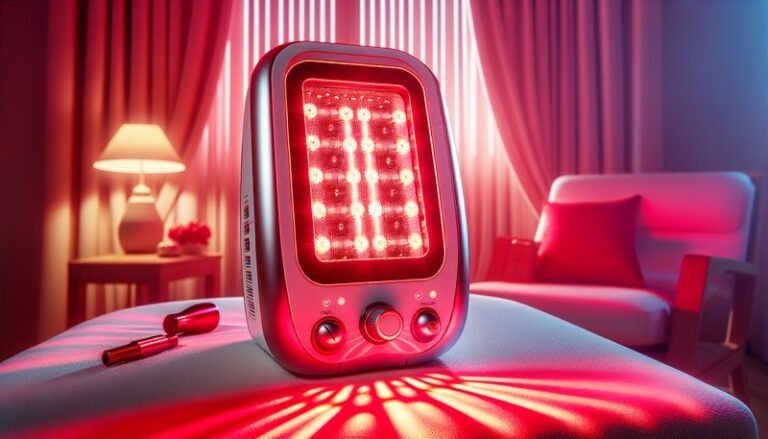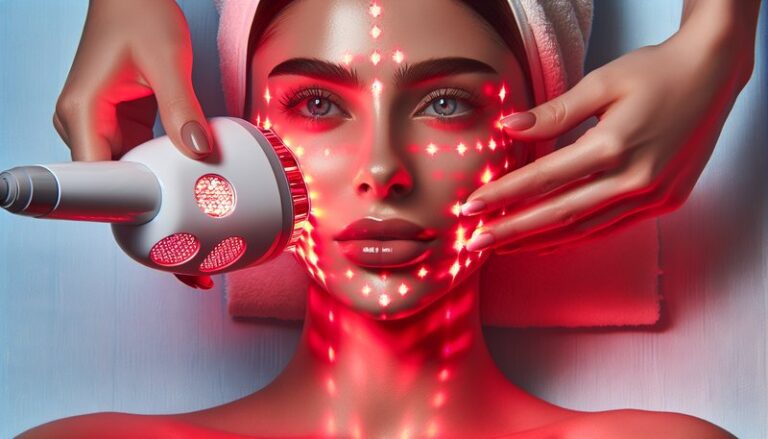Can Led Red Light Therapy Cause Cancer?
Can LED Red Light Therapy Cause Cancer?
Is LED red light therapy a safe alternative for treatment, or does it pose potential risks, including cancer?
This article explores the concerns surrounding LED red light therapy, focusing on its safety, efficacy, and possible links to cancer. We’ll delve into what the therapy involves, examine its benefits, and assess the risks associated with its use to equip readers with informed perspectives.
Key Takeaways
- LED red light therapy is considered safe and does not contain wavelengths that can cause cancer.
- It offers numerous benefits, including improved skin health and pain relief.
- Awareness of safety precautions and alternative therapies is crucial for informed decision-making.
What is LED Red Light Therapy?
LED red light therapy is a non-invasive treatment that uses specific wavelengths of red light to penetrate the skin. This therapy is often used for various applications, such as promoting skin rejuvenation, reducing inflammation, and alleviating pain.
This therapy typically emits light in the range of 600 to 900 nanometers, a spectrum that is known to boost cellular function. By stimulating mitochondrial activity, it helps cells produce more ATP (adenosine triphosphate), the energy currency of the cell, promoting healing and regeneration.
The technology utilizes LED lights in various applications, including home devices, professional treatments, and wellness spas. Unlike ultraviolet (UV) light, which is known to increase the risk of skin cancer, the wavelengths used in LED red light therapy do not damage DNA or initiate carcinogenesis.
What are the Benefits of LED Red Light Therapy?
LED red light therapy boasts several advantages, making it a popular choice in both clinical and home settings. Here are some notable benefits:
Enhanced Skin Health
Research has shown that this therapy can reduce wrinkles, improve skin texture, and diminish scars by stimulating collagen production. Regular sessions can lead to a healthier complexion, making it a preferred option for anti-aging treatments.
Pain Relief and Anti-Inflammation
Numerous studies demonstrate the ability of red light therapy to alleviate pain associated with conditions like arthritis, muscle injuries, and joint disorders. By enhancing circulation and reducing inflammation, patients experience significant relief without the side effects often associated with medications.
For the full story, read Red Light Therapy for Psoriasis?
Faster Wound Healing
The stimulation of cellular metabolism promotes quicker healing processes. Athletes and those recovering from surgery often utilize red light therapy to accelerate recovery times, effectively minimizing downtime.
Mood and Energy Enhancement
Beyond physical benefits, some studies suggest that exposure to red light can enhance mood and energy levels, making it a potential adjunct therapy for seasonal affective disorder or chronic fatigue.
Is it Possible for LED Red Light Therapy to Cause Cancer?
Considering the concerns about any potential health risks, it’s essential to examine whether LED red light therapy can cause cancer.
Current evidence suggests that LED red light therapy does not pose a carcinogenic risk. The wavelengths used are significantly different from those that cause mutations in cellular DNA, such as those in UV light. Thus, while the therapy is associated with numerous health benefits, no credible studies link it to cancer onset.
What are the Advantages of LED Red Light Therapy?
LED red light therapy offers various advantages, including:
Non-Invasive Treatment
Unlike surgical alternatives, this therapy does not involve incisions or invasive procedures, making it a safer option for many patients.
Minimal Side Effects
Patients experience few to no side effects, making it suitable for a wide range of individuals, including those with sensitive skin.
Convenience of Use
Many devices are available for home use, allowing for easy access and management of personal health routines.
What are the Things to Consider Before Starting LED Red Light Therapy?
While LED red light therapy is generally regarded as safe, there are several important factors to consider before commencing treatment.
Consult a Healthcare Professional
Before starting therapy, it’s advisable to consult a healthcare provider who can assess your individual health situation and recommend appropriate treatments.
Research Device Quality
Not all red light therapy devices are created equal. Users should investigate the quality, specifications, and manufacturer credibility before making a purchase.
Monitor Skin Sensitivity
Individuals with specific skin sensitivities should take extra care. Performing a patch test can help to ensure no adverse reactions occur.
Evaluate Treatment Frequency
Understanding the recommended frequency and duration of sessions is vital for optimal results. Overuse may lead to undesired effects, so adhering to guidelines is crucial.
What are the Alternatives to LED Red Light Therapy?
Several alternatives to LED red light therapy may also promote skin health and pain relief.
Laser Therapy
Laser treatments offer targeted skin rejuvenation and pain alleviation, although they may involve a more invasive approach compared to LED therapy.
Topical Treatments
Creams and serums containing retinoids can help improve skin texture and promote collagen production. These may be less expensive but often require consistent use over time.
Physical Therapy
For pain management, physical therapy can provide tailored exercises and modalities to alleviate discomfort and improve mobility.
Massage Therapy
Massage is another non-invasive method for relieving muscle tension and pain, complementing the benefits of red light therapy.
Conclusion: Is it Recommended to Try LED Red Light Therapy?
In conclusion, LED red light therapy is considered a safe and effective option for skin enhancement and pain relief without a direct risk of cancer. With various benefits and minimal side effects, many individuals find value in incorporating this therapy into their health routines. Consulting with healthcare professionals and considering personal needs will help determine if LED red light therapy is the right choice.
Frequently Asked Questions
Can LED red light therapy be used daily?
Yes, LED red light therapy can be used daily, depending on the device and treatment protocol. Many users benefit from regular sessions, but it’s important to consult product guidelines.
Learn more in Is all red light therapy the same?
Are there any side effects associated with LED red light therapy?
Most users report minimal to no side effects. However, some may experience temporary redness or sensitivity in the treated area, which typically resolves quickly.
How long does it take to see results from LED red light therapy?
Results can vary, but many people notice improvements in skin appearance within a few weeks of regular use. Pain relief can also be observed relatively quickly, often within a few sessions.
Is LED red light therapy safe for all skin types?
Generally, LED red light therapy is safe for all skin types. However, those with specific skin conditions should consult a healthcare professional prior to treatment.
Can I use LED red light therapy while pregnant?
While there is no specific evidence suggesting risks associated with LED red light therapy during pregnancy, consulting a healthcare provider for personalized advice is recommended.






